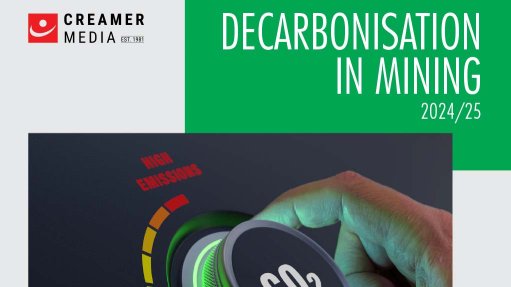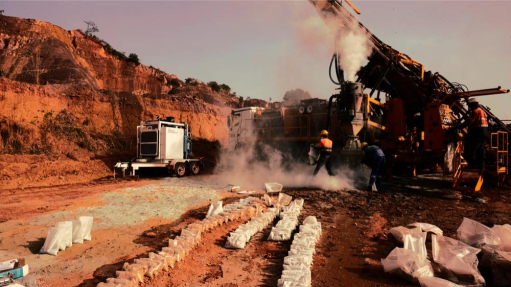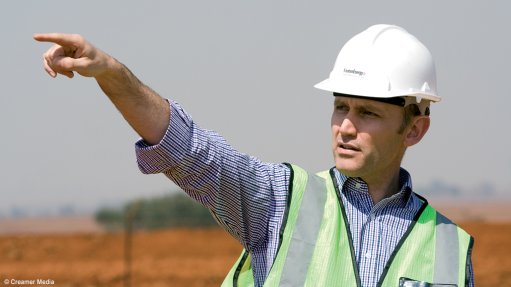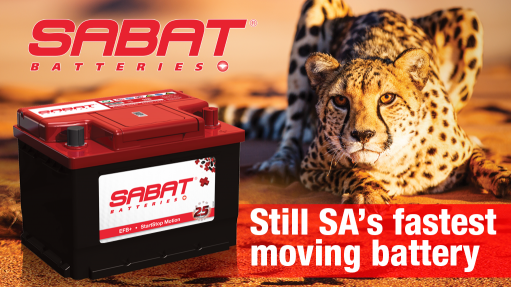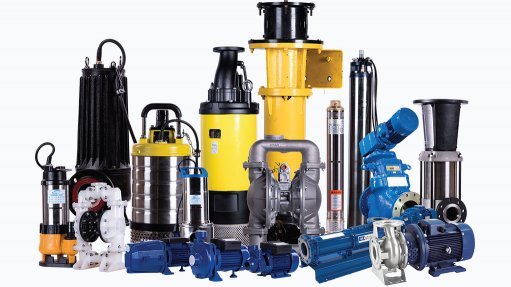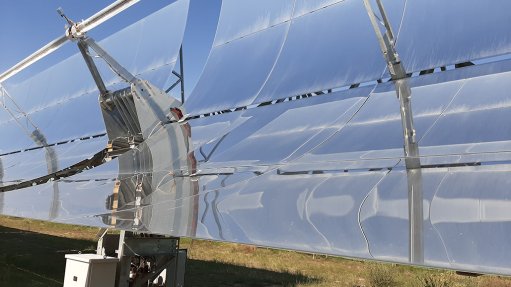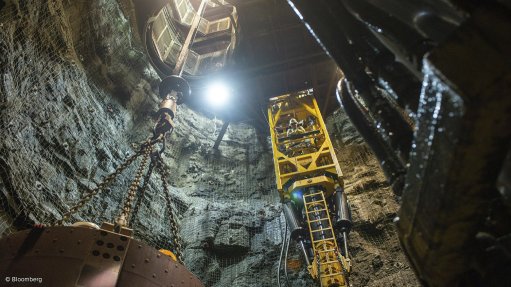Old steam loco used to deliver Western Aqueduct pipes
A unique combination of mothballed technology and new infrastructure saw a steam locomotive dating back to the 1930s deliver 40 massive 18-m-long pipes to points along the 7 km Western Aqueduct (WA) pipeline route between Inchanga station and Alverstone Neck, in KwaZulu-Natal, last month.
Martin Bright, project manager for the WA, Durban’s biggest ever bulk water pipeline project, says the Umgeni Steam Railway, one of only a handful of steam train preservation projects that is still active in South Africa, offered the locomotive to help solve a logistical dilemma.
“eThekwini Water & Sanitation (EWS) approached Umgeni Steam Railway when it was discovered that moving the pipes up the steep slope to the construction site would not only be dangerous but would also require expensive, specialised equipment. “As the stretch of railway line operated by the Umgeni Steam Railway runs alongside the pipe corridor, this was a much safer and viable option,” he explains.
The huge pipes, which each weigh 9 t and have a 16 000 mm diameter, were trucked to Inchanga station from a pipe yard in Cato Ridge. From there, each pipe was individually loaded on to an innovative bogie consisting of two carriage chassis that was specially built for the task by Cycad Construction.
Cycad Construction was awarded the tender for the 7 km stretch between Inchanga station and Alverstone Neck in March. The first phase of the WA project, which covered 19 km from Umlaas road to Inchanga station, was commissioned in June 2011. The second phase, which covers 55 km and stretches from Inchanga station to Ntuzuma, is expected to be completed in 2017.
Bright says the original plan was to move the pipes using a diesel locomotive. However, according to Marc Bouchier, treasurer of Umgeni Steam Railway, it was soon discovered that this was too small and not up to the task. The steam locomotive was substituted.
Payment for shifting the pipes will go towards the refurbishment of the Umgeni Steam Railway’s main locomotive, which was taken out of service 18 months ago, after 15 years of hard work. Built in 1912, she is known as a mountain locomotive, as she was specially designed for what was then known as the Natal line, which has a particularly steep gradient, says Bouchier.
Comments
Press Office
Announcements
What's On
Subscribe to improve your user experience...
Option 1 (equivalent of R125 a month):
Receive a weekly copy of Creamer Media's Engineering News & Mining Weekly magazine
(print copy for those in South Africa and e-magazine for those outside of South Africa)
Receive daily email newsletters
Access to full search results
Access archive of magazine back copies
Access to Projects in Progress
Access to ONE Research Report of your choice in PDF format
Option 2 (equivalent of R375 a month):
All benefits from Option 1
PLUS
Access to Creamer Media's Research Channel Africa for ALL Research Reports, in PDF format, on various industrial and mining sectors
including Electricity; Water; Energy Transition; Hydrogen; Roads, Rail and Ports; Coal; Gold; Platinum; Battery Metals; etc.
Already a subscriber?
Forgotten your password?
Receive weekly copy of Creamer Media's Engineering News & Mining Weekly magazine (print copy for those in South Africa and e-magazine for those outside of South Africa)
➕
Recieve daily email newsletters
➕
Access to full search results
➕
Access archive of magazine back copies
➕
Access to Projects in Progress
➕
Access to ONE Research Report of your choice in PDF format
RESEARCH CHANNEL AFRICA
R4500 (equivalent of R375 a month)
SUBSCRIBEAll benefits from Option 1
➕
Access to Creamer Media's Research Channel Africa for ALL Research Reports on various industrial and mining sectors, in PDF format, including on:
Electricity
➕
Water
➕
Energy Transition
➕
Hydrogen
➕
Roads, Rail and Ports
➕
Coal
➕
Gold
➕
Platinum
➕
Battery Metals
➕
etc.
Receive all benefits from Option 1 or Option 2 delivered to numerous people at your company
➕
Multiple User names and Passwords for simultaneous log-ins
➕
Intranet integration access to all in your organisation




